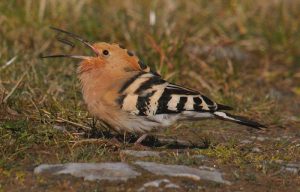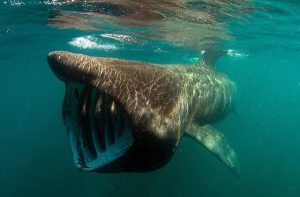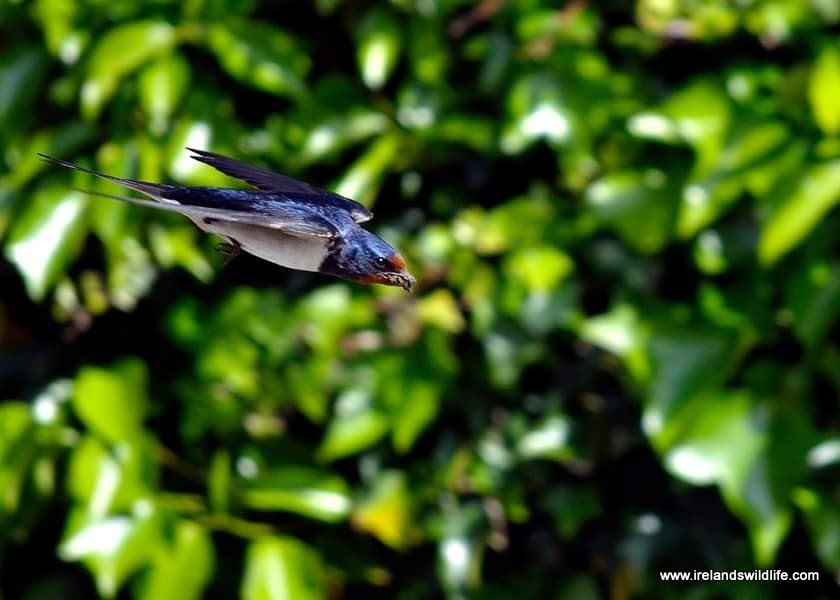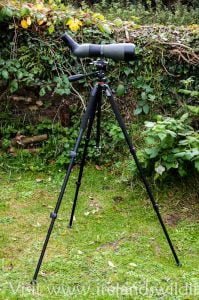Yesterday was a special day.
A lone, almost insignificant silhouette transformed the usually hum-drum task of dropping the car in to the garage into a wholly noteworthy enterprise. Elegant, streamlined, forked tail streamers fluttering in the breeze… the profile perched on the telephone wire was unmistakable: my first swallow of 2016.
Seeing your first swallow of spring is always a special moment. Something about their return buoys the spirit, banishes the winter blues and hints at the influx of more spring visitors, adding immeasurable colour to our landscape and soundscape.
But one swallow, they say, does not a summer make. So I was doubly delighted later in the day when I heard the familiar cheerful chirping, and glanced up to see a pair of swallows passing over the house. Happy days!
Spring migration in full swing
The swallows, of course, aren’t alone. Chiffchaffs are belting out their onomatopoeic song wherever I go now, and around the country reports of wheatears, sandmartins, and other early arrivals abound. Over the coming weeks they’ll be joined by other species, including blackcap, house martin, willow warbler, cuckoo (if you’re lucky enough to see or hear one), sedge warbler, reed warbler swift, and bringing up the rear, one of my favourites… the charismatic spotted flycatcher.
Don’t forget to log your first sightings of swallow, swift and cuckoo on the Spring Alive Website — an annual collaborative European effort to track the progress of spring migration across the continent.

Whenever birds are moving en-mass (generally spring and autumn in this part of the world) there’s a chance of something a little out of the ordinary turning up, particularly around the coast where many new arrivals first make landfall. Last year we had an unusually prominent fall of the splendid-looking hoopoe along the south coast here… and extreme rarities can and occasionally do turn up.
Check out our feature on Spring Migration for a more in-depth look at why this time of year is one of the best on the birding calendar.

Spring is a fantastic time of year to get out exploring coastlines and headlands around Ireland to see what you might find. As the cold weather of winter slowly fades, and the days get longer and warmer, nature bursts into life.
It’s not just the birds, of course. Mammals are particularly active; wildflowers are erupting in hedgerows, verges and meadows; basking sharks are back off the Irish coast; butterflies and moths are emerging; bees are on the wing; you’ll find bats hawking for insects at dusk, and it won’t be long before dragonflies and damselflies join the party.
In short it’s a wonderful time to get out and see wildlife. I plan to squeeze in as much wildlife watching as I can in between now and our Discover Wildlife Weekend in mid May (there are still a few openings on the weekend if you’d care to join us). So get out there, get exploring, and don’t forget to let us all know what you encounter over on the Ireland’s Wildlife page on Facebook, or via @WildIreland on Twitter.










6 comments
Lester MC Namara
I live in Athenry and our fields are alive with swallows every year.last year was busier than ever. We had fourteen pairs and in October they left for the winter and there were over fifty swallows flying in our hotel ca park. They nested in the underground car park, nice and cosy and I loved having them there . Looking forward to there arrival , I cannot wait so excited to greet them. Summer will be back with them and they will fly through Trevelayns corn.lester fromAthenry.
Mr
In contrast, we seem to have had as many swallows as ever this year, possibly even more. I didn’t count the returning pairs in spring, but a few weeks ago I counted more than 50 swallows roosting in the rafters above our two stables and woodshed. No doubt most were born this year and by now they’re almost all gone.
I live in Ballycullen, near Moneystown in Wicklow.
Hilary Brady
We would normally have 10 to 12 nests around our stables, this year they only visited four of our stables – very worrying, I love when walking the paddocks with my dogs watching them dive in and out as we disturb the insects.
anne
come and visit Ireland – we had six swallows returning and they have had 3 broods. The first contingent has left and we still have 2 martin nests going strong.
Susan Reid
The skies around Ribchester and Longridge in the Ribble Valley are also bereft of swallows!!! What is going on? Only two pair of swallows at mine and last years nests are empty.
Sally London
You are lucky if your swallows are back, I live near Cambridge and for the first time since I’ve lived here the sky is empty of swallows and martins, I feel really bereft!